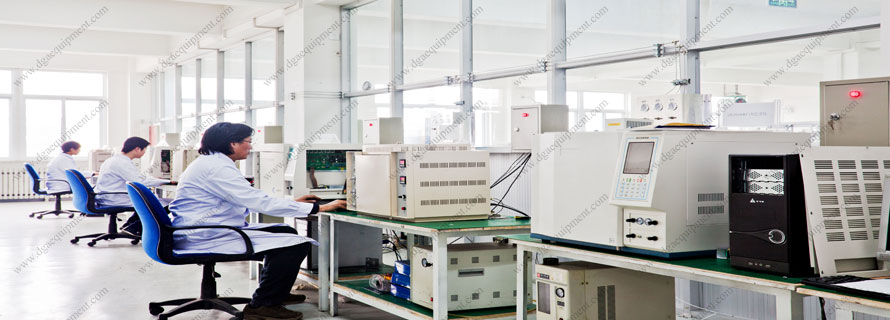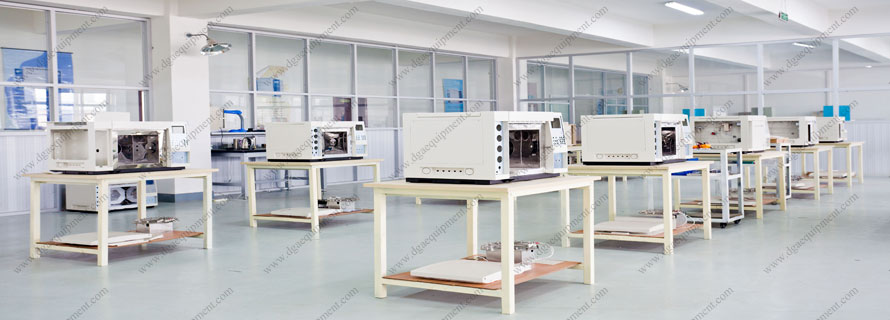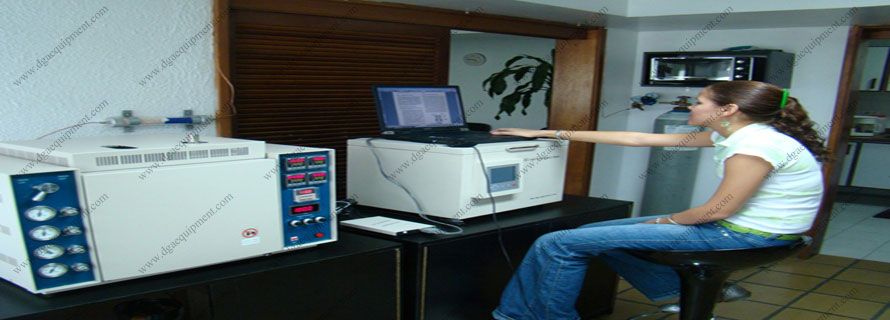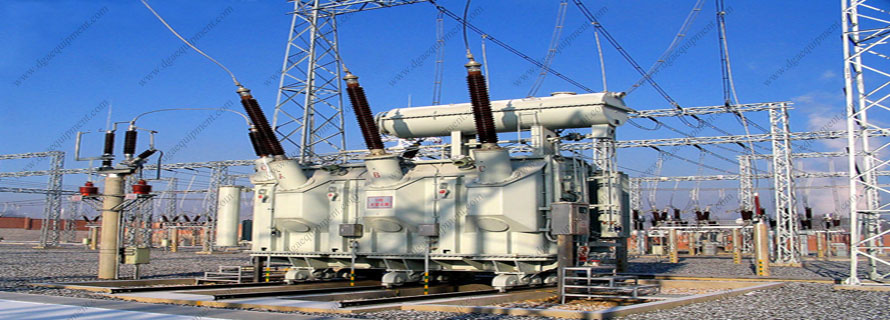ASTM D5842 Sampling and Handling of Fuels for Volatility Measurement
ASTM D5842 Standard Practice for Sampling and Handling of Fuels for Volatility Measurement
7. Specific Sampling Procedures
7.1 Sampling Procedures - The standard sampling procedures described in this practice are summarized in Table 1. Alternative sampling procedures can be used if a mutually satisfactory agreement has been reached by the party(ies) involved and such agreement has been put in writing and signed by authorized officials.
7.2 Tank Sampling:
7.2.1 Bottle Sampling - The bottle sampling procedure is applicable for sampling fuels of 105 kPa (16 psia) Reid equivalent vapor pressure or less in tank cars, tank trucks, shore tanks, ship tanks, and barge tanks.
7.2.1.1 Apparatus - A suitable sampling bottle as shown in Fig. 3 is required. Recommended diameter of the opening in the bottle or sample thief is 19 mm (3/4 in.).
7.2.1.2 Procedure:
(a) All-levels Sample - Lower the weighted, stoppered bottle (see Fig. 3) as near as possible to the draw-off level, pull out the stopper with a sharp jerk of the cord or chain and raise the bottle at a rate so that it is 70 to 85 % full as it emerges from the liquid.
(b) Running Sample - Lower the stoppered container (with a hole or slot in the stopper) at a uniform rate as near as possible to the level of the bottom of the outlet connection or swing line and immediately raise the bottle to the top of the fuel at a rate of speed such that it is 70 to 85 % full when withdrawn from the liquid.
NOTE 2 - Running or all-level samples are not necessarily representative because the tank volume may not be proportional to the depth and because the operator may not be able to raise the sampler at the required rate.
(c) Upper, Middle, and Lower Samples - Lower the weighted, stoppered bottle to the proper depths (Fig. 4) as follows:
upper sample: middle of upper third of the tank contents
middle sample: middle of the tank contents
lower sample: middle of the lower third of the tank contents
At the selected level, pull out the stopper with a sharp jerk of the cord or chain and allow the bottle to fill completely, as evidenced by the cessation of air bubbles. When full, raise the bottle, pour off a small amount (15 to 30 %), and stopper immediately.
(d) Top Sample - Obtain this sample (Fig. 4) in the same manner as specified for an upper sample but at 150 mm (6 in.) below the top surface of the tank contents.
(e) Handling - Cap and label bottle samples immediately after taking them, and deliver to the laboratory in the original sampling bottles. Multiple samples must be tested individually for vapor pressure. A composite sample is acceptable for other analytical tests. Inverting the sample container can aid in leak detection. Sample may be placed in ice immediately for cooling if practical (see Section 10 ).
7.2.2 Tap Sampling - The tap sampling procedure is applicable for sampling liquids of 105 kPa (16 psia) DVPE, or less, in tanks that are equipped with suitable sampling taps or lines. This procedure is recommended for volatile stocks in tanks of the breather and balloon roof type, spheroids, floating roof tanks, and so forth. The assembly for tap sampling is shown in Fig. 5.
7.2.2.1 Apparatus:
(a) Tank Taps - Equip the tank with at least three sampling taps placed equidistant throughout the tank height. A standard 1/4 in. pipe with a suitable valve is satisfactory. A sufficient number of sample taps are needed on the tank to make sampling possible at various levels.
(b) Tube - Use a delivery tube that will not contaminate the product being sampled and is long enough to reach to the bottom of the sample container to allow submerged filling.
(c) Tube Chiller Assembly (Optional) - If a sampling chiller is used, it is a coil of tubing immersed in an ice bath to chill a fuel sample as it is dispensed into the sample container.
(d) Sample Containers - Use clean, dry glass bottles of convenient size and strength or metal containers to receive the samples.
7.2.2.2 Procedure - Before a sample is drawn, flush the sample tap and tube until approximately three times its volume has been purged. When sampling for Reid equivalent vapor pressure, the container must be chilled to a temperature as low as the material in the tank or to 0°C (32°F), whichever is greater (see sample chilling apparatus in Fig. 6). Filling the container and emptying it three times will meet this temperature requirement. Draw upper, middle, or lower samples directly from the respective taps after the flushing operation. Stopper or seal and cap, label the sample container immediately after filling and deliver it to the laboratory.
7.3 Line Sampling - The continuous sampling procedure is applicable for sampling liquids of 105 kPa (16 psia) Reid equivalent vapor pressure or less and semi-liquids in pipelines, filling lines, and transfer lines. The line sampling may be done manually or by using automatic devices. In order to take a representative sample from a line, the contents are mixed to ensure uniform distribution of all components and contaminants across the line. If it is necessary to condition the line, this is done four to six pipe diameters upstream of the sample point.
7.3.1 Apparatus:
7.3.1.1 Sampling Probe - The function of the sampling probe is to allow withdrawal of a representative portion of liquids. The apparatus assembly for dynamic line sampling is shown in Fig. 7. A probe is recommended for the sampling of static systems but it is not required. Probe designs that are commonly used are as follows:
(a) A tube beveled at a 45° angle (Fig. 7a).
(b) A long-radius forged elbow or pipe bend with the end of the probe reamed to give a sharp entrance edge (Fig. 7b).
(c) A closed-end tube with a round orifice spaced near the closed end (Fig. 7c).
7.3.1.2 Probe Location - The probe inlet is extended into the pipe to the center one-third of the pipeline cross-sectional area. The probe is inserted perpendicular to the direction of flow with the sample opening facing upstream. The sampling lines are kept as short as practicable and purged completely before any samples are taken.
7.3.1.3 Valves - To control the rate at which the sample is withdrawn, the probe or probes are fitted with ball, gate, needle, or large port valves.
7.4 Automatic Samplers - An automatic sampler includes not only the automatic sampling device that extracts the samples from the line, but also a suitable probe, connecting lines, auxiliary equipment, and a container in which the sample is collected. It must maintain sample integrity. Refer to API MPMS Chapter 8.2. Automatic samplers are classified as follows:
7.4.1 Continuous Sampler, Time Cycle (Nonproportional) Type - A sampler designed so that it transfers equal increments of liquid from the pipeline to the sample container at uniform time increments.
7.4.2 Continuous Sampler, Flow-Responsive (Proportional) Type - A sampler designed to automatically adjust the sampling rate to be proportional to the flow rate of the stream.
7.4.3 Calibration - Prior to initial operation, the sample bite size must be verified to be within +/-5 % of the specification using an acceptable calibration procedure. Additionally, the required sample volume must be obtained during any sampling period so that the manufacturer's sampling interval is not exceeded.
7.4.4 Container - The container must be a clean, dry container of convenient size to receive the sample. All connections from the sample probe to the sample container must be free of leaks. The container is constructed in such a manner that it prevents evaporation loss. The construction must allow cleaning, interior inspection, and complete mixing of the sample prior to removal. A fixed volume type container is equipped with a pressure-relief device.
7.5 Grab or Spot Sampling - Purge approximately three volumes of product through the sample tap and tubine. Divert the sample stream to the sampling container to provide a quantity of sample that will be of sufficient size for analysis.
7.6 Nozzle Sampling - The nozzle sampling procedure is applicable for sampling light fuels from a retail type dispenser.
7.6.1 Apparatus - Sample containers conforming with Section 6 should be used. A spacer, if appropriate, and a nozzle extension as shown in Fig. 8 and Fig. 9 are used when nozzle sampling.
7.6.2 Procedure - Immediately after fuel has been delivered from the pump and the pump has been reset, attach a spacer (Fig. 8), if needed, to the pump nozzle (vapor recovery type). Insert nozzle extension (Fig. 9) into the previously chilled sample container and insert the pump nozzle into the extension with slot over the air bleed hole. Fill the sample container slowly through the nozzle extension to 70 to 85 % full (Fig.10). Remove the nozzle extension. Insert the seal and cap or stopper into the sample container at once. Check for leaks. If a leak occurs, discard the sample container and resample. If the sample container is leak tight, label the container and deliver it to the laboratory.



